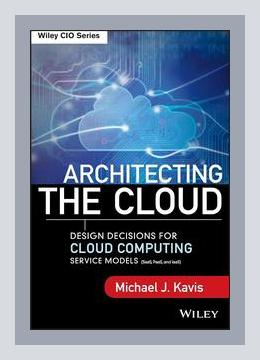Technology and Digital TransformationCloud Computing
Title: Architecting the Cloud: Design Decisions for Cloud Computing Service Models
Author: Michael J. Kavis
Genre: Cloud Computing
Publication Year: 2014
Summary:
1. Introduction to Cloud Computing
Michael J. Kavis opens up with an in-depth discussion on the foundational concepts of cloud computing, emphasizing the fundamental service models: Infrastructure as a Service (IaaS), Platform as a Service (PaaS), and Software as a Service (SaaS). He explains that transitioning to the cloud is more about the change in operational models rather than merely a technological shift. Examples include Amazon Web Services (AWS) for IaaS and Microsoft Azure for PaaS.
Action Point:
– Evaluating Needs: A crucial action point here is for organizations to assess their specific needs and workloads to determine the most suitable service model. They might start by listing the core business functions and identifying which service model aligns best. For instance, if the need is for a development environment, PaaS may be more appropriate.
2. Decision Framework for Cloud Migration
Kavis stresses the importance of a decision framework when migrating applications to the cloud. He describes a step-by-step approach, including the examination of existing IT infrastructure, understanding business goals, and evaluating the cost implications.
Example:
– A company might use the Total Cost of Ownership (TCO) calculator provided by cloud vendors like AWS or Google Cloud Platform to compare current data center costs with projected cloud costs.
Action Point:
– Creating a Decision Framework: Develop a detailed decision framework that considers technical, financial, and business implications. Conduct a TCO analysis to understand the cost-benefit ratio of migrating to the cloud.
3. Designing Scalable Architecture
Scalability is a core attribute of cloud computing. Kavis dedicates significant focus on architectural patterns such as horizontal scaling and stateless applications. He provides examples like Netflix, which uses AWS’s elastic load balancing to handle fluctuating traffic volumes.
Action Point:
– Implementing Scalability Patterns: Organizations can adopt horizontal scaling by distributing resources across multiple servers. Start by redesigning applications to be stateless, allowing them to scale out effectively and distribute load evenly.
4. Ensuring Security in the Cloud
Security concerns are paramount in cloud computing. Kavis discusses multi-tenant environments, data encryption, and identity management. He cites the use of Virtual Private Cloud (VPC) in AWS as a mechanism to enhance security and isolate resources.
Example:
– Using AWS Identity and Access Management (IAM) to control access and permissions for different users.
Action Point:
– Enhancing Security: Implement strict access controls and encryption. Regularly review permissions and conduct security audits to ensure compliance with best practices.
5. Cloud Service Provider Selection
Choosing the right cloud service provider is a critical decision. Kavis outlines criteria for making this choice, such as reliability, SLAs (Service Level Agreements), compliance, and global reach. He compares major players like AWS, Google Cloud, and Microsoft Azure, explaining their unique advantages and service offerings.
Action Point:
– Vendor Comparison: Perform a comparative analysis of potential cloud service providers based on organizational needs. Look into aspects such as cost, performance, geographic presence, and support services.
6. Hybrid Cloud Strategy
Many enterprises are opting for a hybrid cloud approach, combining on-premises infrastructure with public cloud services. Kavis mentions enterprises like GE, which use a combination of both to balance control and flexibility.
Action Point:
– Developing a Hybrid Strategy: Identify which applications and data sets can be moved to the cloud and which need to remain on-premises. Implement seamless integrations and ensure data portability between environments.
7. Cloud Performance and Monitoring
Kavis highlights the necessity of continuous performance monitoring and optimization in a cloud environment. He talks about using tools such as Amazon CloudWatch for AWS and Azure Monitor for Microsoft services to track performance metrics.
Action Point:
– Implement Monitoring Tools: Set up comprehensive monitoring systems to track performance, diagnose issues, and optimize resource usage. Use alert systems to proactively address potential problems.
8. Case Studies and Real-World Applications
Throughout the book, Kavis provides real-world case studies detailing successful cloud implementations. Companies like Netflix, Dropbox, and Airbnb are highlighted for their innovative use of cloud technologies.
Example:
– Netflix’s use of Amazon Web Services for streaming video content worldwide.
Action Point:
– Learning from Case Studies: Study these case studies to understand common challenges and solutions. Apply these insights to your cloud strategy, emphasizing lessons learned and best practices.
9. Cost Management in the Cloud
Optimizing costs is imperative when adopting cloud services. Kavis suggests strategies such as using reserved instances, right-sizing instances, and leveraging auto-scaling features.
Action Point:
– Cost Optimization: Implement cost management practices by regularly reviewing usage and identifying opportunities for savings. Utilize tools like AWS Cost Explorer to track and analyze expenditures.
10. Future Trends and Innovations
Kavis concludes with a look at emerging trends and future directions in cloud computing, such as serverless computing, edge computing, and AI-driven cloud services. He discusses how these innovations could further transform IT landscapes.
Example:
– Adoption of serverless architectures like AWS Lambda to run code without provisioning servers.
Action Point:
– Staying Informed: Keep abreast of evolving technologies and trends. Regularly update your cloud strategy to incorporate emerging best practices and leveraging cutting-edge solutions.
Conclusion:
Michael J. Kavis’ “Architecting the Cloud: Design Decisions for Cloud Computing Service Models” serves as an essential guide for IT professionals and enterprises looking to navigate the complexities of cloud adoption. The book provides comprehensive insights into service models, architectural strategies, security concerns, and operational effectiveness in a cloud environment. By applying the actionable points highlighted, organizations can create robust, scalable, and cost-efficient cloud infrastructures that align with their business goals.
